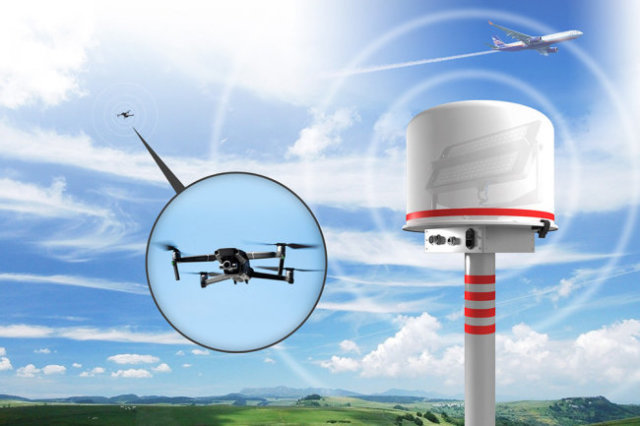The small-sized radar station (MRLS) "Volna", designed for round-the-clock and all-weather search, detection and tracking of ultra-small drones, is being put into trial operation.
Along with large strike unmanned aerial vehicles, very small drones that perform the functions of a flying scout and a fire spotter pose a serious security threat. Such devices are often encountered by those who participate in a special military operation on the territory of Ukraine.
Multicopters are especially dangerous. When a helicopter-type drone flies, it is tracked by radar air defense systems. But when it freezes, it is no longer possible to detect it with classical radars using the Doppler effect. The drone becomes invisible. And if we take into account that such devices have a very scanty effective reflection surface, then it is almost impossible to detect them in flight.
Last year, a group of young specialists, united in a creative team, was able to create a small-sized radar station that instantly captures an uninvited unmanned guest. Even motionless.
According to the developers, the three-coordinate multipath active antenna system created by them can significantly improve the technical characteristics of small-sized radar stations. Already today we can talk about the following advantages: round-the-clock all-weather operation; automatic notification when drones are detected; obtaining results in real time; integration with enemy drone suppression systems.
The radar was named "Wave". It is tested and ready for mass production. A trial batch was made, which one of the large corporations was interested in, planning to strengthen the protection of its facilities with the help of the Wave. Including in the territories bordering Ukraine.
The developers used continuous radiation technology with frequency modulation in their radars. This is what opened up new possibilities for the use of radar for detecting and tracking small targets. "Wave" has small dimensions, low power consumption, high resolution.
The modular principle is widely used in the design, which made it possible to divide a complex structure into functional blocks. This approach made it possible to simultaneously design a stationary version of a small-sized radar and its wearable version.
As the developers say, the dimensions and deployment time are very important for the mobile version, while for the stationary one, reliability of operation for a long time and protection from changing weather conditions are of particular importance.
The "Wave" in a stationary version can be installed on the roofs of buildings, along border strips, along the perimeter of protected objects. With minimal energy consumption, a network of such stations will provide guaranteed control of airspace over sufficiently large areas. One stationary "Wave" scans the air within a radius of 30 km.
The mobile version is intended primarily for army special forces. For example, when going to explore a certain area, the commandos expose and mask several such radars. When someone else's drone or helicopter appears, the group commander immediately receives a warning signal with the exact coordinates of the enemy aircraft. The same signal is received by the covering forces having the appropriate air defense systems. That is, the commandos will take additional camouflage measures, and the observer drone will most likely be destroyed before it can see anything.
It's worth repeating. The stationary "Wave" takes over the experimental duty. And its mobile version is ready for military tests. In the current extreme conditions, according to all experts, it is urgently necessary to revise the algorithm for introducing new equipment into the Armed Forces. Especially the one that is needed most today.
Sergey Ptichkin

